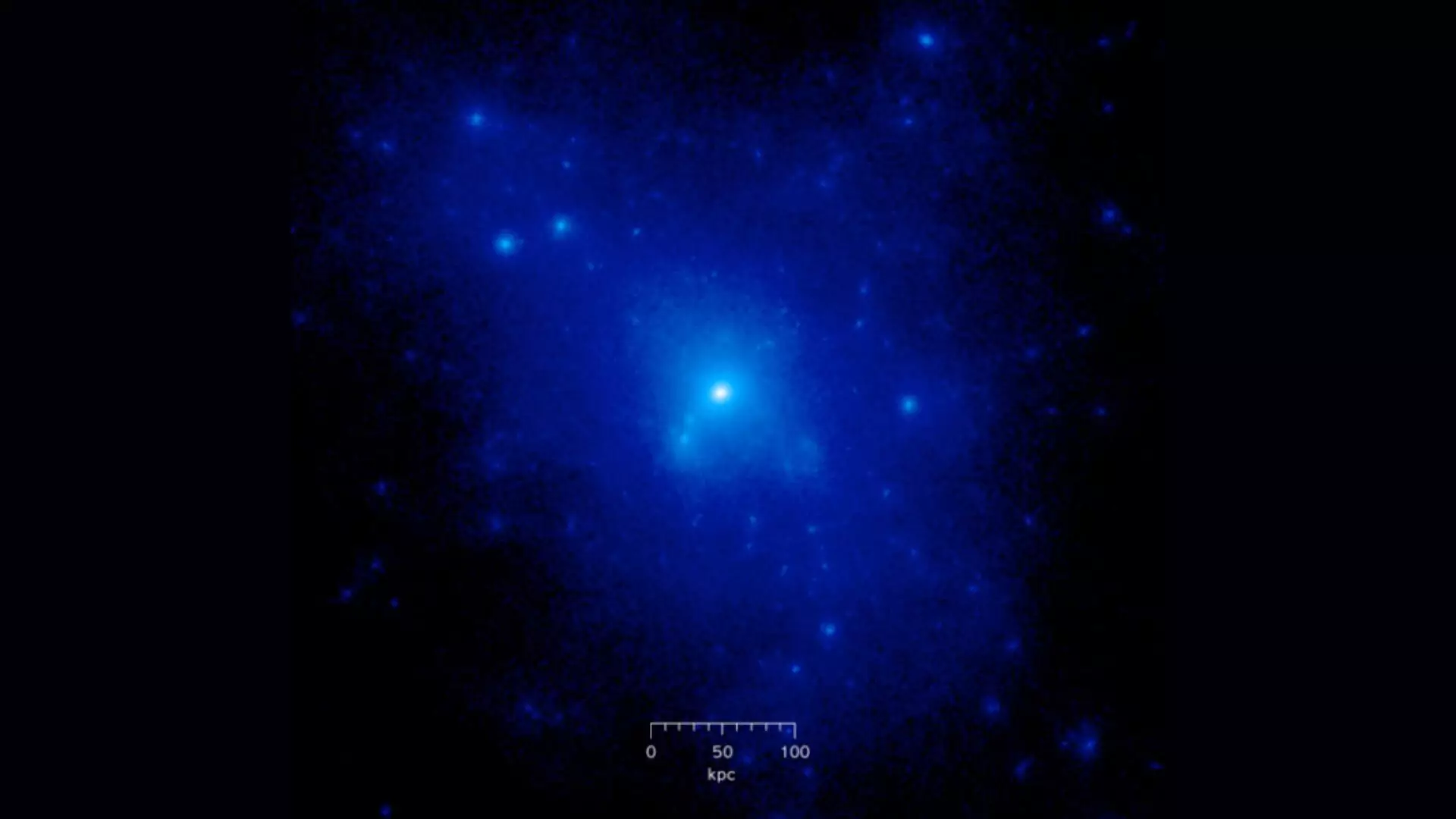Recent advancements in astrophysical research have unveiled groundbreaking methodologies for investigating baryonic matter, which makes up approximately 5% of the observable universe. Baryonic matter, primarily consisting of protons and neutrons, serves as a fundamental component in the formation of cosmological structures, such as stars, planets, and galaxies. Its spatial distribution provides critical insights into the dynamics of the universe, particularly regarding how baryonic material interacts with dark matter—an enigmatic substance that composes roughly 27% of the universe. This interrelation between baryonic matter and dark matter underpins the vast and intricate cosmic web, where both constituents are gravitationally intertwined.
A new study published in *Physical Review Letters* has successfully presented the first clear evidence of cross-correlation between cosmic shear and the diffuse X-ray background. This study, conducted by Dr. Tassia Ferreira and her colleagues at the University of Oxford, marks a significant milestone in the quest to decode the behaviors and characteristics of baryonic matter, ushering in a new paradigm in cosmological measurements. Leveraging robust observational data from two critical sources—the Dark Energy Survey Year 3 and The ROSAT All-Sky Survey—the researchers deftly combined these insights to unveil hitherto concealed patterns of baryonic matter.
This innovative approach not only advances our scientific inquiry into the spatial distribution of baryonic matter but also emphasizes a holistic framework for analyzing cosmological phenomena. By interlinking the measurements from cosmic shear, which reflects the distribution of dark matter through gravitational lensing effects, with X-ray emissions from heated baryonic gas, the researchers crafted a sophisticated model that enhances the scope of our understanding of cosmic structure formation.
Dr. Ferreira’s study underscores the immense potential of cross-correlation techniques in cosmology. The application of cosmic shear measurements enables astronomers to indirectly gauge the distribution of dark matter by analyzing the distortion of background galaxies caused by gravitational effects. However, while cosmic shear excels at elucidating dark matter’s influence, it originally offered limited information concerning baryonic matter.
Conversely, X-ray observations reveal the thermal emissions from baryonic gas in dark matter halos, thus providing complementary information. The dual observational strategy allows researchers to analyze how dark matter influences baryonic matter within halos—where baryons can exist in either concentrated forms like stars or in diffuse states, such as hot gas. Nonetheless, pinpointing these interactions is historically fraught with complexities due to the intricacies involved in observational data and the interactions within dark matter environments.
The study’s cross-correlation of cosmic shear data and X-ray emissions illuminated a statistically significant relationship denoted by a 23σ (sigma) significance level. This robust correlation not only reinforces the connection between the two datasets but also suggests a deeper link in terms of how baryonic and dark matter coexist within the universe.
Moreover, the study made substantial progress in estimating the halfway mass of dark matter halos—about 115 trillion solar masses—thereby providing a clearer understanding of gas expulsion from these halos due to cosmic processes such as star formation and black hole activity. The implications of such findings extend beyond mere numerical estimates; they provoke thought about how cosmic structures evolve over time and impact the overall architecture of the universe.
Dr. Ferreira envisions expanding upon their current findings to develop a robust theoretical framework that tackles the residual uncertainties identified in cosmological parameters. The study posits an exciting leap toward validating theoretical models by implementing methodologies that can further dissect the interrelationships between baryonic and dark matter.
Looking ahead, the integration of cross-correlations with additional observational data, such as Sunyaev-Zel’dovich Compton-y maps, could yield invaluable insights. By considering the sensitivity of multiple observational methods, future studies might effectively diminish existing degeneracies inherent in previous analyses, thereby enhancing the precision of our cosmological models.
As astrophysics continues to evolve, the collaboration between observational techniques and theoretical constructs remains paramount. The breakthrough achieved by Dr. Ferreira and her team not only represents a notable advance in baryonic matter detection but also sets a precedent for future research endeavors. With upcoming projects like the Vera Rubin Observatory and the Euclid mission, the pursuit of understanding the universe’s fundamental elements is poised to accelerate, illuminating the cosmic landscape and expanding our comprehension of its intricate tapestry. The path forged by this study marks a valuable contribution to the ongoing dialogue surrounding cosmological structures, urging scientists to re-evaluate the symbiotic relationships within the universe.

